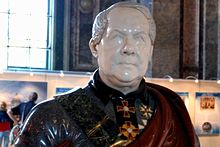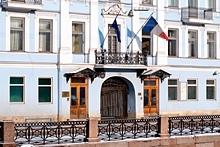French St. Petersburg
The 18th century saw both the creation of St. Petersburg and the flowering of French culture around the Enlightenment. Russian high society viewed France as the centre of high culture and progress, the pinnacle of humanity. The higher echelons of Russian education were modeled on the French system, and French became the lingua franca of the Russian court and nobility, especially as many more foreigners married into Russia's leading families.

Peter the Great employed French architects, engineers and artists, while Catherine the Great entered into correspondence with the greatest French thinkers of her day, including Voltaire and Diderot, the latter helping her to find French sculptors, musicians and designers to work in St. Petersburg, before himself visiting the city for two years.
Despite the upheavals of the French Revolution and the Napoleonic Wars, France remained the cultural benchmark for St. Petersburg throughout the 19th century, the main source of the fashions, luxury goods, and entertainments enjoyed by St. Petersburg high society. It was therefore no surprise that Paris proved the most popular destination for aristocratic emigres after the Bolsheviks came to power. While despising such bourgeois decadence, the Soviet authorities nonetheless particularly prized their links with French communists, as well as renaming central streets in St. Petersburg after the major figures of the French Revolution (Marat Street and Robespierre Embankment, amongst others).
Nowadays, although France has lost some of its prestige in the eyes of Petersburgers (the city's rich have long shown a marked preference for Italian cuisine and Italian fashion over French), cultural links remain strong, nurtured by a shared heritage, particularly in the world of ballet, where the flowering of St. Petersburg in the late 19th century was undoubtedly a Franco-Russian joint production and remains one of the greatest sources of pride to the city.





